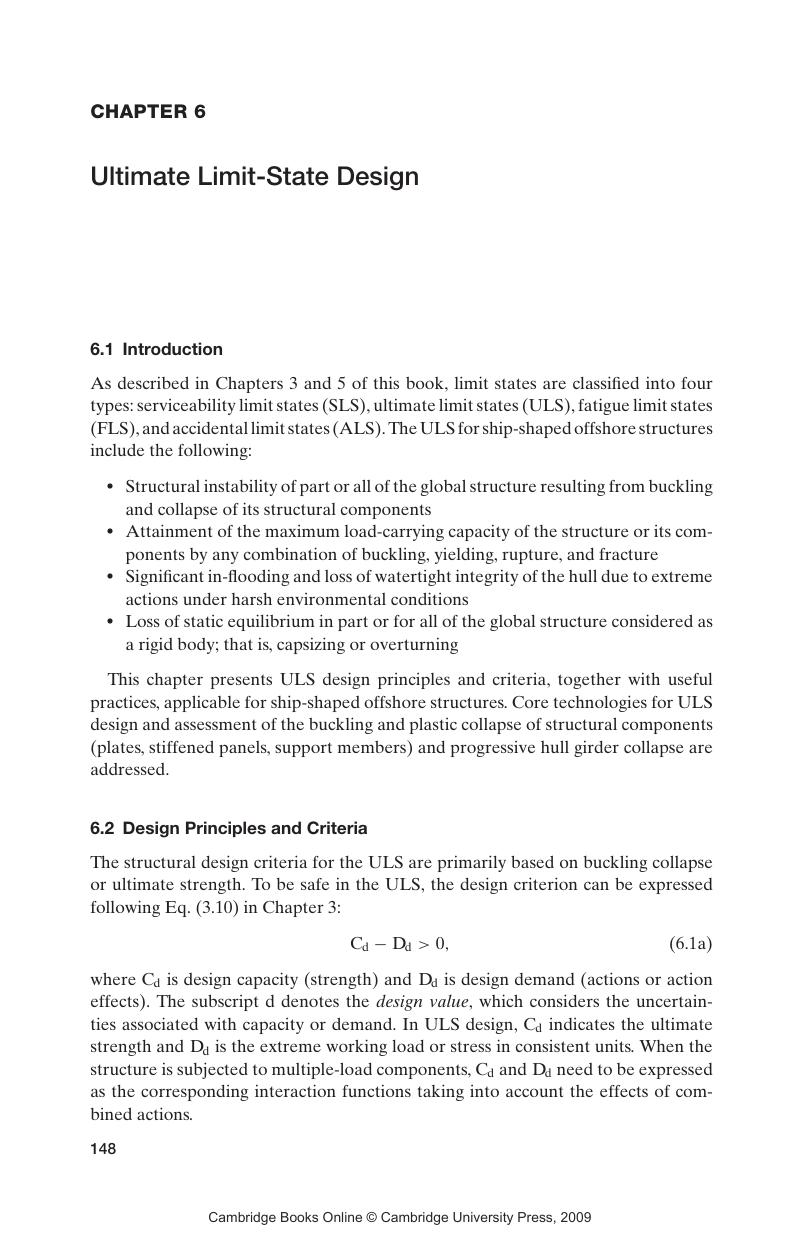Book contents
- Frontmatter
- Contents
- Preface
- Acknowledgments
- How to Use This Book
- 1 Overview of Ship-Shaped Offshore Installations
- 2 Front-End Engineering
- 3 Design Principles, Criteria, and Regulations
- 4 Environmental Phenomena and Application to Design
- 5 Serviceability Limit-State Design
- 6 Ultimate Limit-State Design
- 7 Fatigue Limit-State Design
- 8 Accidental Limit-State Design
- 9 Topsides, Mooring, and Export Facilities Design
- 10 Corrosion Assessment and Management
- 11 Inspection and Maintenance
- 12 Tanker Conversion and Decommissioning
- 13 Risk Assessment and Management
- Appendix 1 Terms and Definitions
- Appendix 2 Scale Definitions of Winds, Waves, and Swells
- Appendix 3 Probability of Sea States at Various Ocean Regions
- Appendix 4 Scaling Laws for Physical Model Testing
- Appendix 5 Wind-Tunnel Test Requirements
- Appendix 6 List of Selected Industry Standards
- Index
- References
6 - Ultimate Limit-State Design
Published online by Cambridge University Press: 17 September 2009
- Frontmatter
- Contents
- Preface
- Acknowledgments
- How to Use This Book
- 1 Overview of Ship-Shaped Offshore Installations
- 2 Front-End Engineering
- 3 Design Principles, Criteria, and Regulations
- 4 Environmental Phenomena and Application to Design
- 5 Serviceability Limit-State Design
- 6 Ultimate Limit-State Design
- 7 Fatigue Limit-State Design
- 8 Accidental Limit-State Design
- 9 Topsides, Mooring, and Export Facilities Design
- 10 Corrosion Assessment and Management
- 11 Inspection and Maintenance
- 12 Tanker Conversion and Decommissioning
- 13 Risk Assessment and Management
- Appendix 1 Terms and Definitions
- Appendix 2 Scale Definitions of Winds, Waves, and Swells
- Appendix 3 Probability of Sea States at Various Ocean Regions
- Appendix 4 Scaling Laws for Physical Model Testing
- Appendix 5 Wind-Tunnel Test Requirements
- Appendix 6 List of Selected Industry Standards
- Index
- References
Summary

- Type
- Chapter
- Information
- Ship-Shaped Offshore InstallationsDesign, Building, and Operation, pp. 148 - 216Publisher: Cambridge University PressPrint publication year: 2007



